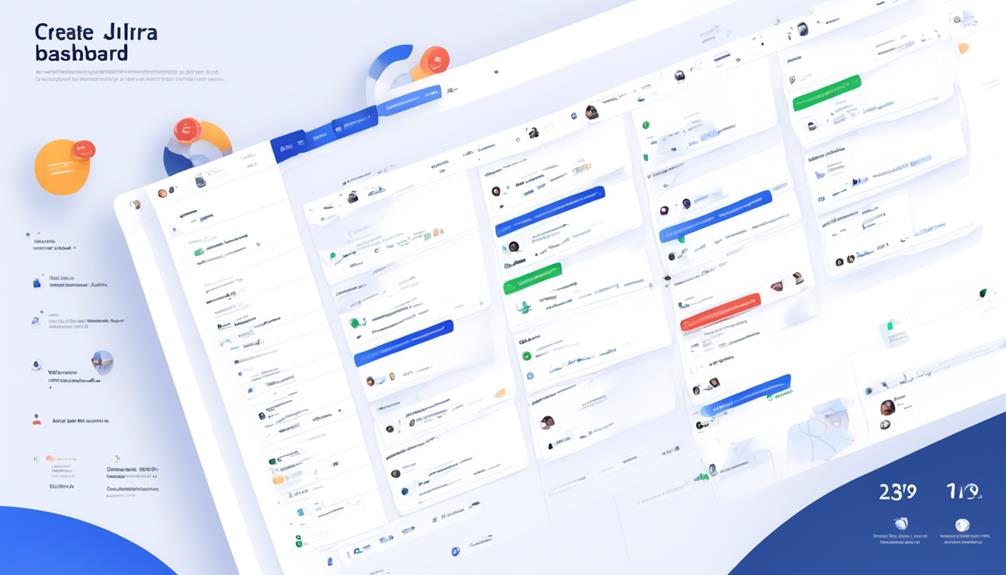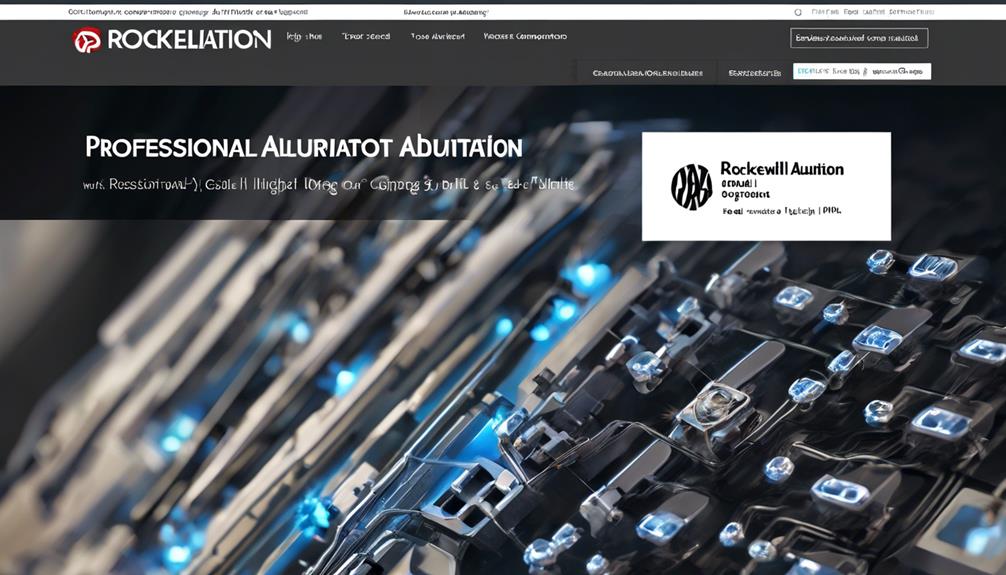In navigating the constantly evolving field of digital marketing, an email automation strategy serves as a highly efficient system that delivers customized messages to your audience precisely when needed. It acts as a transformative tool for marketers aiming to refine their campaigns and foster significant interaction.
But how can we ensure that our email automation strategy is not just another automated message lost in the void of our subscribers' inboxes? Let's explore the key components that make a successful email automation strategy, from understanding the customer journey to crafting personalized messages that truly resonate with our audience.
Key Takeaways
- Email automation revolutionizes marketing by delivering personalized messages based on triggers, enhancing customer engagement, and driving conversions.
- Planning and segmentation are crucial in email automation strategy, including defining goals, identifying target audience, setting realistic objectives, and utilizing email verification tools.
- Crafting personalized messages tailored to individual preferences and behaviors is essential for enhancing customer experience, increasing engagement, and improving campaign performance.
- Implementing effective CTAs, using action-oriented language, ensuring visual prominence, and continuously optimizing through A/B testing, can significantly improve conversions and refine email marketing approach.
Understanding Email Automation
Email automation revolutionizes marketing by delivering personalized messages to subscribers based on specific triggers, enhancing customer engagement and driving conversions. Understanding email automation is crucial for leveraging its potential in the marketing automation software.
It enables marketers to create targeted and timely communications, delivering the right message to the right person at the right time. By utilizing customer data and behavior-triggered rules, email automation allows for the seamless delivery of welcome series, onboarding sequences, and personalized product recommendations. This strategy replaces manual, one-off messages with automated workflows that ensure consistent and relevant communication with subscribers.
Marketers can segment their audience based on various criteria, such as demographics, engagement levels, or past purchase behavior, to tailor their messages effectively. Understanding email automation involves grasping the power of triggered emails, dynamic content, and A/B testing to optimize campaign performance.
Planning Your Campaign
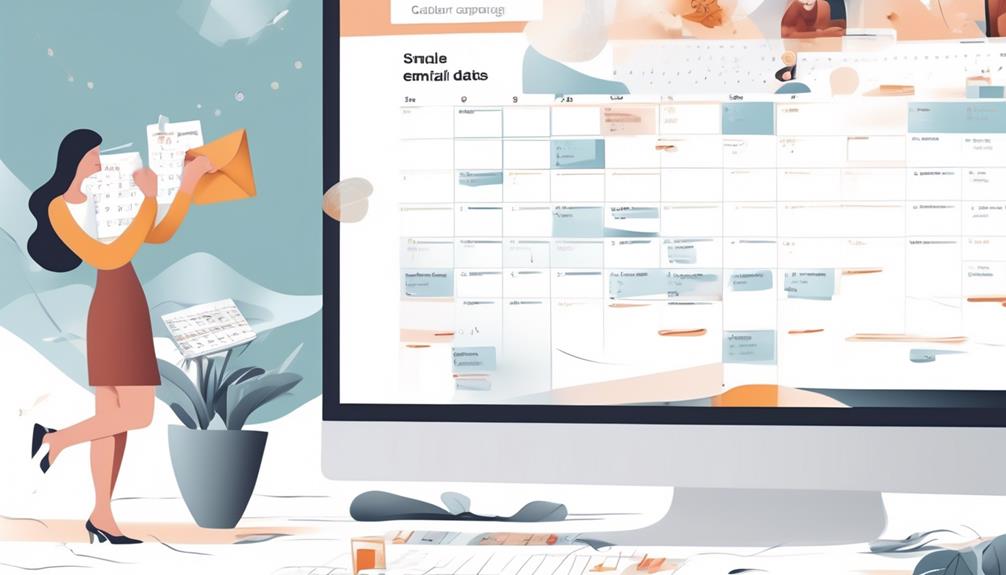
To plan an effective email automation campaign, it's crucial to define specific goals and measurable outcomes. Identifying your target audience and understanding their demographics and online behavior is essential for crafting personalized and engaging content.
Whether your goals are to nurture trust and engagement, increase social engagement, drive website traffic, build brand awareness, or convert free trial customers, it's important to set realistic objectives that align with your overall business goals.
Utilizing email verification tools can also ensure that your contacts are legitimate and increase the effectiveness of your automated campaigns. By segmenting your audience based on their behaviors and preferences, you can tailor your messaging to better resonate with each group, ultimately improving engagement and conversion rates.
Additionally, integrating your email automation with other aspects of your marketing strategy, such as social media and content marketing, can create a cohesive and impactful brand experience for your audience.
This strategic approach to planning your email automation campaign will maximize its effectiveness and drive better results for your business.
Segmenting Your Audience
By segmenting our audience based on demographics, behavior, and preferences, we can create personalized and relevant content for specific segments, leading to higher engagement and conversions. Segmenting your audience is a crucial aspect of an effective email automation strategy. Here's why:
- Personalization: Segmentation allows us to tailor our messages to different audience groups, making our emails more personalized and relevant.
- Higher Engagement: Sending targeted messages to specific segments increases the likelihood of higher engagement as the content resonates with the recipients.
- Improved Conversions: Understanding customer behavior through segmentation helps in crafting compelling content that can lead to improved conversion rates.
- Optimized Campaign Performance: Segmentation enables us to deliver the right message to the right audience at the right time, ultimately improving the overall effectiveness of our automation campaigns.
Utilizing audience segmentation ensures that our emails are more targeted, increasing the likelihood of driving meaningful actions and interactions from our subscribers. Therefore, segmenting the audience plays a pivotal role in the success of our email automation campaigns.
Crafting Personalized Messages

Crafting personalized messages is essential for maximizing customer engagement and conversions.
By leveraging customer data, we can tailor our content to individual preferences and behaviors, making our emails more relevant and impactful.
Implementing segmentation and dynamic content allows us to speak directly to each recipient's unique needs, driving higher levels of interaction and satisfaction.
Personalization Techniques
Leveraging personalization techniques in email automation involves tailoring messages to individual subscribers based on their behavior, preferences, and demographics to enhance customer experience and drive higher conversions. Crafting personalized messages includes using dynamic content, customer data, and segmentation to create relevant and engaging email content.
By leveraging personalization techniques, marketers can enhance customer experience, increase engagement, and drive higher conversions. Personalized messages can include tailored product recommendations, relevant offers, and customized content based on subscriber interactions.
Personalization in email automation can lead to stronger customer relationships, increased brand loyalty, and improved email campaign performance.
Customer Engagement
Tailoring content to individual customer interests and behaviors enhances customer engagement and drives higher conversions in email automation. Crafting personalized messages based on triggers such as purchases, website visits, or specific actions is vital for effective automated email marketing.
Personalization engines play a crucial role in customizing content to match customer preferences, thereby increasing the impact of an email automation strategy.
The use of personalized messages not only increases engagement, conversions, and revenue but also fosters stronger customer relationships and boosts customer satisfaction.
Implementing Effective CTAs
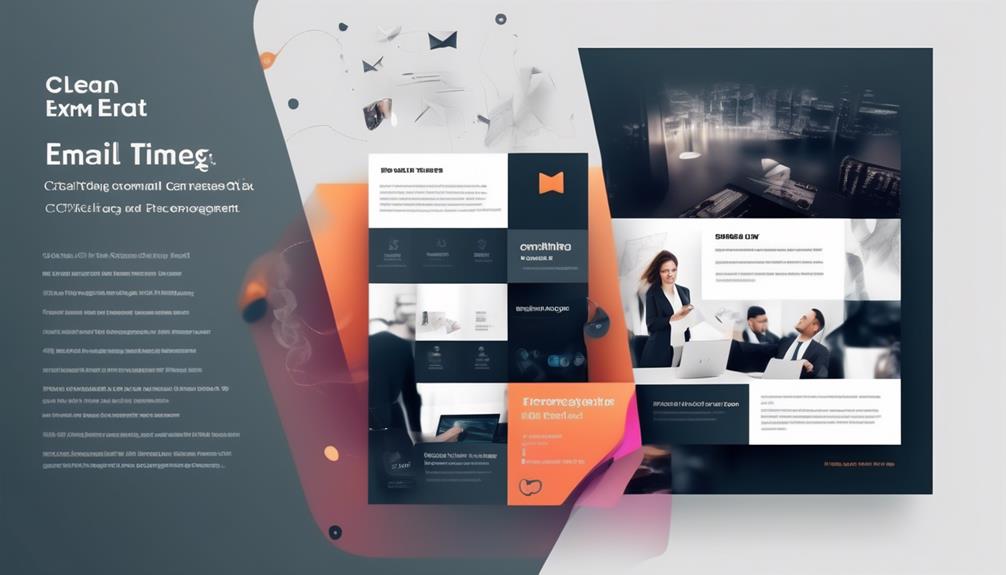
To effectively prompt specific actions from your audience through email CTAs, it's essential to craft clear and compelling messages using action-oriented language that encourages clicks. When implementing effective CTAs in your automated email campaigns, consider the following best practices:
- Use action-oriented language: Employ phrases like 'Shop Now,' 'Learn More,' or 'Get Started' to prompt immediate engagement.
- Visual prominence: Ensure that the CTA stands out visually within the email and is positioned prominently to capture the reader's attention.
- Personalization: Tailor CTAs based on customer segments and behaviors to drive higher engagement and relevance.
- Continuous optimization: Test different CTAs and analyze their performance to optimize for conversions, leveraging A/B testing and data analysis to refine your approach.
Leveraging A/B Testing
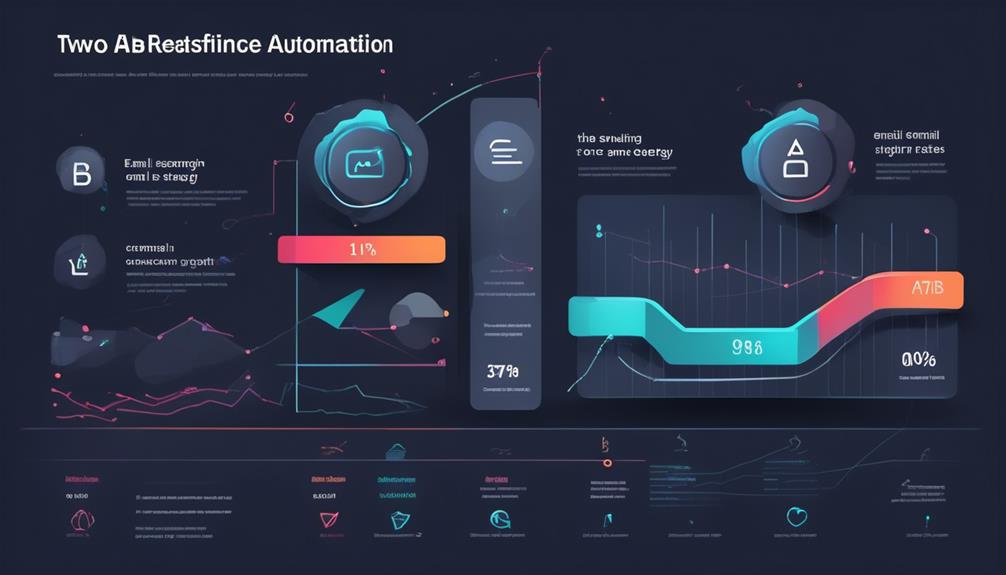
How can A/B testing enhance the effectiveness of email marketing campaigns?
A/B testing, also known as split testing, is a powerful tool for optimizing email marketing efforts. By comparing two versions of an email, marketers can gather valuable insights to refine their automation workflows.
This method allows for testing different elements such as subject lines, images, or call-to-action buttons, enabling data-driven decisions to be made. Utilizing A/B testing in email marketing provides the opportunity for continuous improvement and optimization, leading to increased engagement and conversion rates.
Leveraging A/B testing empowers marketers to make informed decisions about email content, design, and strategies, ultimately enhancing the overall effectiveness of email campaigns.
Optimizing and Repeating
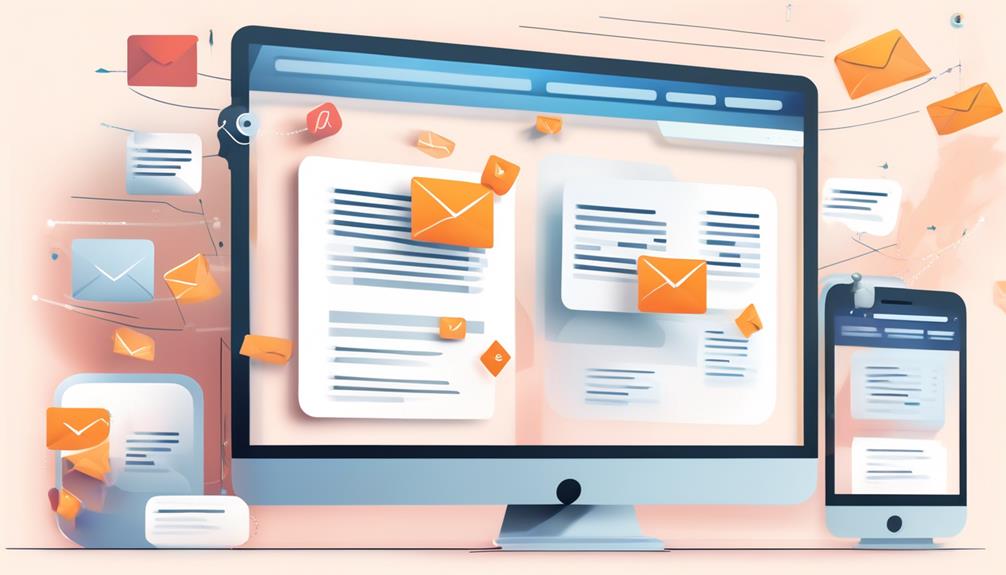
Continuously refining and optimizing email automation workflows is crucial to enhancing customer experiences and maximizing campaign performance. To achieve this, we must focus on the following key strategies:
- A/B Testing: Optimize email content and subject lines through A/B testing to improve engagement and conversions. By testing different variations, we can identify what resonates best with our audience and fine-tune our automated messages for maximum impact.
- Repeat Successful Strategies: When we find email automation strategies that deliver exceptional results, it's essential to repeat them. By reinforcing customer engagement through consistently successful approaches, we can drive consistent and reliable outcomes.
- Segmentation and Personalization: Utilize segmentation and personalization consistently to maximize the effectiveness of email automation strategies. Tailoring messages to specific audience segments enhances relevance and increases the likelihood of engagement.
- List Growth Tactics: Implement targeted signup forms and incentives to build a strong and engaged email list, repeating successful tactics for list growth. By consistently employing effective methods for growing our subscriber base, we can ensure a steady influx of potential leads.
How Can I Incorporate Date Based Email Automation into My Overall Email Automation Strategy?
Looking to automate your email dates? Consider integrating date-based email automation into your overall strategy. By setting up trigger-based emails for specific dates or events, you can personalize your messaging and engage with your audience at the right time. Incorporating this feature can streamline your email marketing efforts and improve customer communication.
Analyzing Results

As we analyze the results of our email automation strategy, we'll focus on key metrics like open rates, click-through rates, and conversion rates.
By utilizing A/B testing, we can compare different email templates and subject lines to identify top performers.
Evaluating lead generation metrics will provide insights into the effectiveness of our campaigns, allowing us to refine and improve our strategy for better outcomes.
Metrics Analysis
Regularly analyzing key performance indicators (KPIs) such as open rates, click-through rates, and conversion rates is essential for gauging the effectiveness of email automation campaigns.
When delving into metrics analysis, it's crucial to focus on the following aspects:
- Engagement: Examining open and click-through rates provides insights into how compelling the email content is to the recipients.
- Retention: Monitoring subscriber activity and how it correlates with the conversion rates helps in understanding customer retention.
- Revenue Generation: Analyzing conversion rates and tracking the revenue generated from email automation campaigns is crucial for determining the financial impact.
Utilizing an advanced email marketing platform enables seamless data collection and analysis to make informed decisions and optimize email automation strategies for improved performance and higher conversion rates.
Campaign Performance
Analyzing campaign performance provides valuable insights into the effectiveness of our email automation strategy. By scrutinizing metrics like open rates, click-through rates, and conversion rates, we gain a comprehensive understanding of our automated drip campaigns.
This analysis enables us to make data-driven decisions to enhance our email automation strategy. Comparing results against key performance indicators (KPIs) allows us to assess the impact of our campaigns and identify areas for improvement.
Continuously evaluating and refining our email automation strategy is essential for optimizing performance. It's crucial to leverage these insights to adapt and evolve our campaigns, ensuring that we consistently deliver relevant and engaging content to our audience.
This iterative approach empowers us to maximize the impact of our email automation strategy.
Data Interpretation
After evaluating the performance of our email campaigns, we derive actionable insights from the data to refine our email automation strategy through data interpretation.
Analyzing results in email automation involves evaluating key performance indicators (KPIs) like open rates, click-through rates, and conversion rates. It helps in understanding the effectiveness of email campaigns and making data-driven decisions for optimization.
Analyzing results also involves conducting A/B testing to compare different email templates, subject lines, and content to determine what resonates best with the audience.
By analyzing results, marketers can gain insights into customer behavior, preferences, and engagement levels to refine their email automation strategy for better performance.
The process of analyzing results in email automation enables marketers to measure the success of their campaigns against their predefined goals and objectives.
Frequently Asked Questions
How Do You Plan an Email Automation?
We plan email automation by setting clear goals aligned with business objectives.
Using segmentation and personalization for engaging messages.
Implementing A/B testing for optimization.
Employing automation workflows and drip campaigns for lead nurturing.
Selecting a credible marketing automation platform.
This data-driven approach ensures relevance and effectiveness, ultimately leading to a better customer experience.
What Are the 7 Email Marketing Strategies?
Oh, the 7 email marketing strategies?
Well, segmentation and personalization, A/B testing, and leveraging dynamic content are key.
Then there's email automation for triggered series, workflows, and drip campaigns.
These drive customer engagement and conversions.
It's all about targeting and nurturing leads, aligning with customer journeys, and re-engaging inactive subscribers for optimal results.
Mastering these strategies can truly elevate your email marketing game.
What Is the Email Automation Process?
We send personalized, automated messages triggered by specific actions or events. This process helps us deliver timely, customized messages based on customer data and behavior-triggered rules.
We integrate customer data into specialized platforms, design email series, and specify triggers and conditions for sending each email. Examples include welcome, birthday, cart recovery, re-engagement, and abandoned product series.
Email automation helps build relationships, drive traffic, increase social engagement, and boost sales conversions while saving time and effort.
Is There a Way to Automate Emails?
Is there a way to automate emails?
Absolutely! We leverage email automation to send personalized messages triggered by customer actions. It allows for targeted, timely communication based on specific conditions.
This approach replaces manual, one-off emails, streamlining our outreach and enhancing customer engagement. By harnessing automation, we can create complex, personalized email journeys that cater to individual subscriber behavior, ultimately driving better results and customer satisfaction.
Conclusion
In conclusion, email automation strategy is essential for delivering personalized and timely messages to your audience.
Just like a well-oiled machine, email automation helps streamline your campaigns, build relationships, and achieve your business goals.
By leveraging this strategy, we can ensure that our messages are reaching the right people at the right time, leading to higher engagement and conversions.
It's like having a personal assistant for your email marketing efforts, making everything run smoothly and efficiently.



